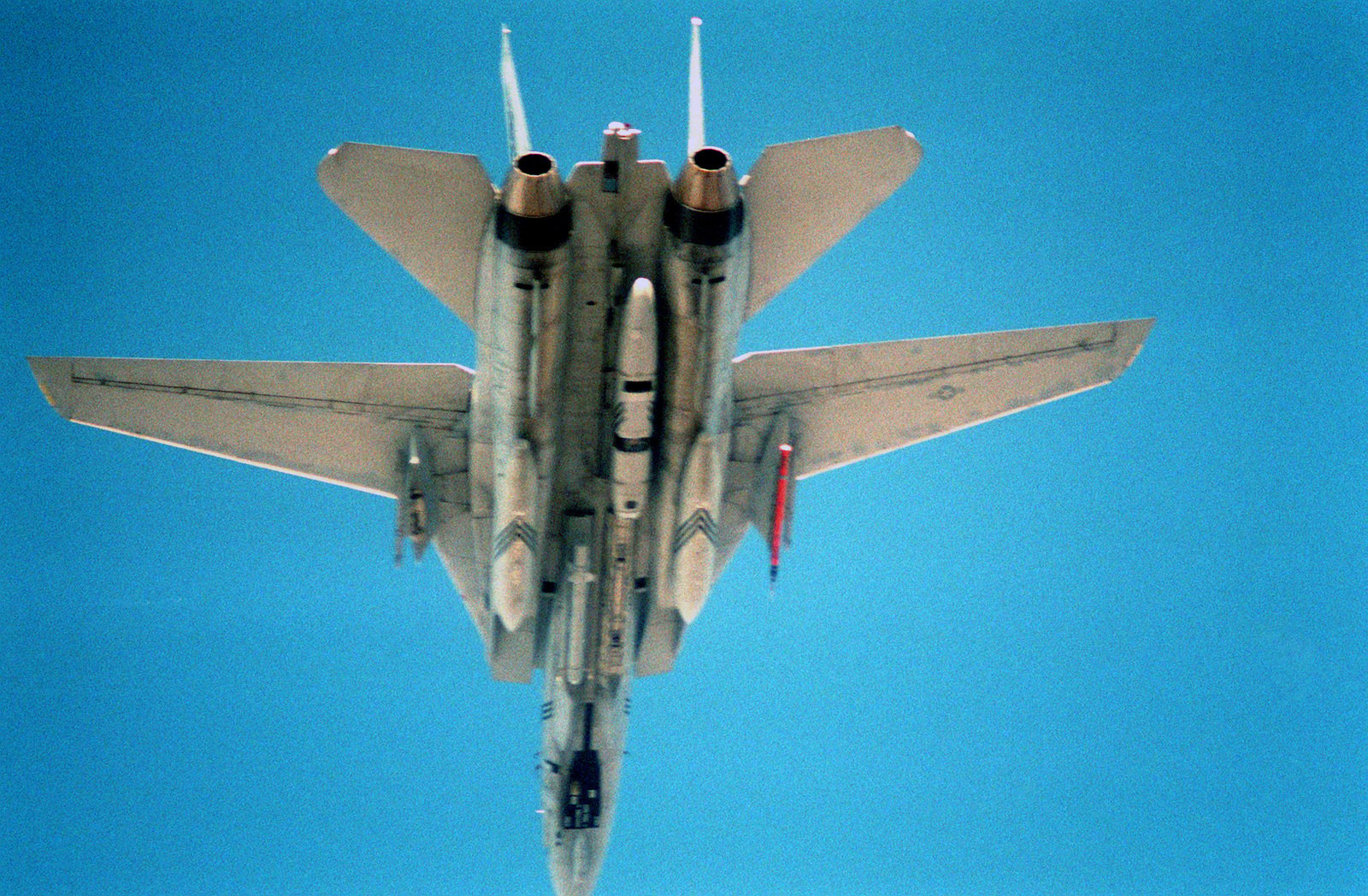At first a little bit of background to make things interesting. After the difficulties faced during the trials, the USN rejected F-111B as it didn’t meet their requirements for high maneuverability. When the US Gov’t allowed USN to select a design that meets their specific requirements, Grumman’s 303 design was finally selected that later became known as F-14 Tomcat.

However, the issue was engine selection as F-14 was initially designed with P&W TF-30 engines. TF-30 wasn’t what USN desired, but what they got initially due to lack of funding. It was basically a bomber engine inherited from F-111B. The engine had various operational limitations and one of them was that it needed very clean air from inlets with straight flow to the compressors and thus, the designers couldn’t turn the air a lot.
Now, coming to the actual question. The F-14 has widely spaced nacelles as compared to other fighters such as F-15 and it is because of two major reasons:
1. Due to the requirement of straight air flow for the TF-30 engines as explained earlier, the engine was needed to be behind the inlets. With dual intake design, a wide space between the nacelles became available. As compared to F-111B that had internal bomb bays, F-14 was designed to carry them externally. The wide nacelles as can be seen in picture below provided the best place for that fitting four 1000 lbs AIM-54s.
2. F-14 had variable geometry wings and putting stores on those wings made the design very complex due to added loads. So, instead of mounting stores on wings, the space between the widely-spaced nacelles was utilized. This provided an additional advantage of having weapons in a low drag configuration. It was so good that the Tomcat could go supersonic to Mach 1.2 with four 1000 lbs bombs as shown in picture below between the nacelles (without stores at glove vanes) which was extraordinary for that time.

The F-14 finally got the right engines in 1980s when it was fitted with GE F-110 engines. However, the original design for intakes was kept. The widely-spaced intakes or nacelles enabled F-14 to carry a wide variety of air-to-air/ground stores and pods in a low drag configuration which was a huge design achievement of the time. This feature fairly supported all the requirements that F-14 was expected to fulfill; long range, highly maneuverable aircraft with intercept and attack roles.





